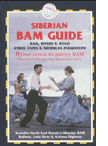Reviews:
Reporter World provides a variety of safety equipment, identification products, specialized high-visibility clothing, pertinent news, product reviews, book reviews and useful links specifically for reporters, writers, assignment editors, news correspondents, journalists, ENG crews, photographers, production staff, directors, segment producers, media security personnel, and freelancers: in short, anyone who is part of the news gathering, information reporting, or documentary film industries.
In this section we review various products and services of relevance to reporters, writers, correspondents, ENG teams and production staff. These products include cameras and accessories; computer hardware and software; scanners; printers; books and other products. Smaller, mini-reviews, are also available in other sections of this site including Products, Books and Movies.
We are constantly adding additional reviews to this section. If you have any suggestions for other products you would like us to review, simply e-mail us using the feedback address on our Terms of Service page. Please supply us with as much information as you can about the product (including name, manufacturer, model number) or book (including title, author, ISBN and publisher).
 Title: Siberian BAM Guide - Rail, Rivers and Road, second edition Title: Siberian BAM Guide - Rail, Rivers and Road, second edition
Authors: Athol Yates & Nicholas Zvegintzov
Copyright: © 2001 (original edition copyright 1995)
Publisher: Trailblazer Publications
ISBN: 1-873756-18-6
Relevance: Trailblazer's Siberian BAM Guide offers up an amazingly impressive compendium of travel information and useful cultural tips for travel in the northeast area of the former USSR. Ideal for reporters and documentary crews working in this area, the guide can be used by adventurous travelers who want to venture far off the beaten path, where Western influence is at a minimum and few inhabitants speak English.
Review: Until very recently, travel to and exploration of the BAM area (an acronym for Baikal-Amur Mainline) has been extremely limited. For decades under the Soviet regime, for example, the BAM area was completely closed to foreigners (and even to other citizens of the former USSR) for security reasons. Behind many of the tall fences were various gulags, secret military bases, and sophisticated defense installations.
Besides politics, there have been other reasons why this region has remained so isolated. As authors Yates and Zvegintzov state, the area is dauntingly inaccessible. The geography, although stunningly beautiful, contains a jumbled mass of high mountain ridges, thickly wooded valleys, and rock slides, mixed in with rivers and some areas of barren rocky portions and swamps infested with huge mosquitoes.
Thus, many a BAM area resident has never encountered a Western traveler, and very few know any English whatsoever. All this underscores the importance of an accurate, up-to-date, and most important of all, “on-the-street” information. The best guidebook we've seen to this area is the Siberian BAM Guide.
Finding an English-speaking travel agent
Besides the obligatory Getting There section, the authors start the book off with various suggested itineraries and stops along the BAM. Unlike traditional assignments where reporters and other correspondents can rely on speaking English and depend on the traditional travel infrastructure (i.e., English speaking travel agents, etc.), the BAM area has only a few organizations that will be able to help.
Consequently, the book spends good time making travel arrangements through different third party agencies and includes an extensive section outlining travel and conditions, such as costs, money, when to go, health, Russian language and even electricity. A What to Take section is also included, although veteran travelers will find this mostly redundant.
The majority of the book is spent describing train travel, the main method by which anyone goes from point A to point B in this region of the world. Reporters, correspondents and production crews are often challenged and chagrined in Russia due to complete culture shock and the stark language barrier. Even in cosmopolitan places such as Moscow and St. Petersburg, services that westerners take for granted are either hard to find or non-existent. It is, therefore, admirable that the book spends some time talking about one's life in a train (and the layout and day-to-day life of passengers), as well as the four types of train carriages for passengers (obshchi, platskartny, coupé, and SV). Knowing what to expect on-board prepares Westerners for the trials and tribulations of the trip itself.
Russian Q&As
The book also explains how to buy railway tickets and how to queue at the appropriate ticket window. Although these may sound trivial to Western travelers, the queuing and the buying is an art unto itself. The book helpfully includes an English/Russian translation for many relevant train requests to be used when buying tickets and getting information. Rather than traditional guidebooks that have lists of separate words and expect language neophytes to magically string them together into a coherent sentence, the Siberian BAM Guide translates complete sentences and suggests that rather than butchering the pronunciation, travelers simply point to the corresponding Russian question.
Of course, questions are helpful, but as many travelers know, when answers come in a foreign language, they are essentially incomprehensible. It is, therefore, even more welcome that the question translations also come with a series of answers with blanks inserted so that the information givers can communicate by pointing to the correct response or filling in the appropriate blanks. Since Russian does not use the western character set, visitors to this area of the world must otherwise learn the basics of the Cyrillic alphabet. Although the Siberian BAM Guide does not devote a huge amount of text on the Russian alphabet and general phrases (for that you can try an excellent generic Russian Phrasebook from Lonely Planet), it does help by explaining the basics.
Extensively illustrated with maps, way points, and town specific information, the Siberian BAM Guide begins its coverage of mainline train routes appropriately at the Taishet-Bratsk stop, an important junction point between the Siberian BAM line and the Trans-Siberian mainline. Like all Trailblazer books, the Siberian BAM Guide is compact enough to be taken along with you on your trip. Each small town, outpost or hamlet is mentioned with mile markers so visitors can keep track of their trip progress.
Extensive service
Both commuter rail and mainline service is given for many towns so reporters and others who are traveling in this area can explore on their own. Each city's entry has sections on orientation, history, how to physically get there, where to stay (especially useful), what to see, and how to communicate with the "outside world" if possible. Phone numbers with area codes are mentioned throughout the book for people who can speak the language.
One of the things we found most inviting about the book is the logical way it is arranged and the linear fashion its information is presented. In some part, this is due to the linear fashion in which train travel occurs. However, the authors have obviously put their experience to work in creating a very logically laid out and useful guide. It is obvious the authors are train fanatics as many otherwise incidental details about train travel such as length of tunnels, types of bridges, engine numbers and other minutia are lovingly described. This is not to dissuade reporters who don’t share a love of trainspotting, but rather to encourage those who are.
The book suggests a number of sample tours to explore the BAM area and covers the BAM mainline routes very well. Cities such as Severobaikalsk, Tynda, Novy Urgal and Komsomolsk-Na-Amure are all covered extensively. BAM branch line routes such as Khrebtovaya to Ust-Ilimsk, Bamovskaya to Tynda (the so-called "Little BAM"), and Izvestkovaya to Novy Urgal to Chegdomyn. The Republic of Sakha including Yakutsk via the Lena River and AYaM, and the Kolyma Highway from Yakutsk to Magadan are extensively explained and outlined.
The book finishes up with extensive appendices outlining the history of the BAM, life in the northeast, a Russian language guide (words specifically relating to train travel, time tables, stations, carriages and other useful railway expressions), a glossary, where to get more information about the BAM area, and perhaps most importantly, the BAM mainline train tables. The book concludes with six well drawn maps outlining the entire region and a serviceable yet somewhat abridged index.
Overall: The Siberian BAM Guide is an indispensable partner for a travel correspondent or writer posted to this area for immediate exploring. Although it is clearly not a substitute for having a Russian speaking guide with you, the book is the next best thing. We have found other Trailblazer books to be very informative, accurate and easy to read, and the Siberian BAM Guide is no exception to this impressive lineage. The book is highly recommended for journalists on assignment in this area, fiction writers looking for background and the "flavor" of this region, or just plain armchair travelers looking for an adventure.
End of Review
Have your say.
You can give us your feedback by visiting our Terms of Service page.
Buy this book.
If you wish to buy this book right now, please click here.
Read other reviews.
If you wish to return to the Reviews page, please click here.
|
|
|





